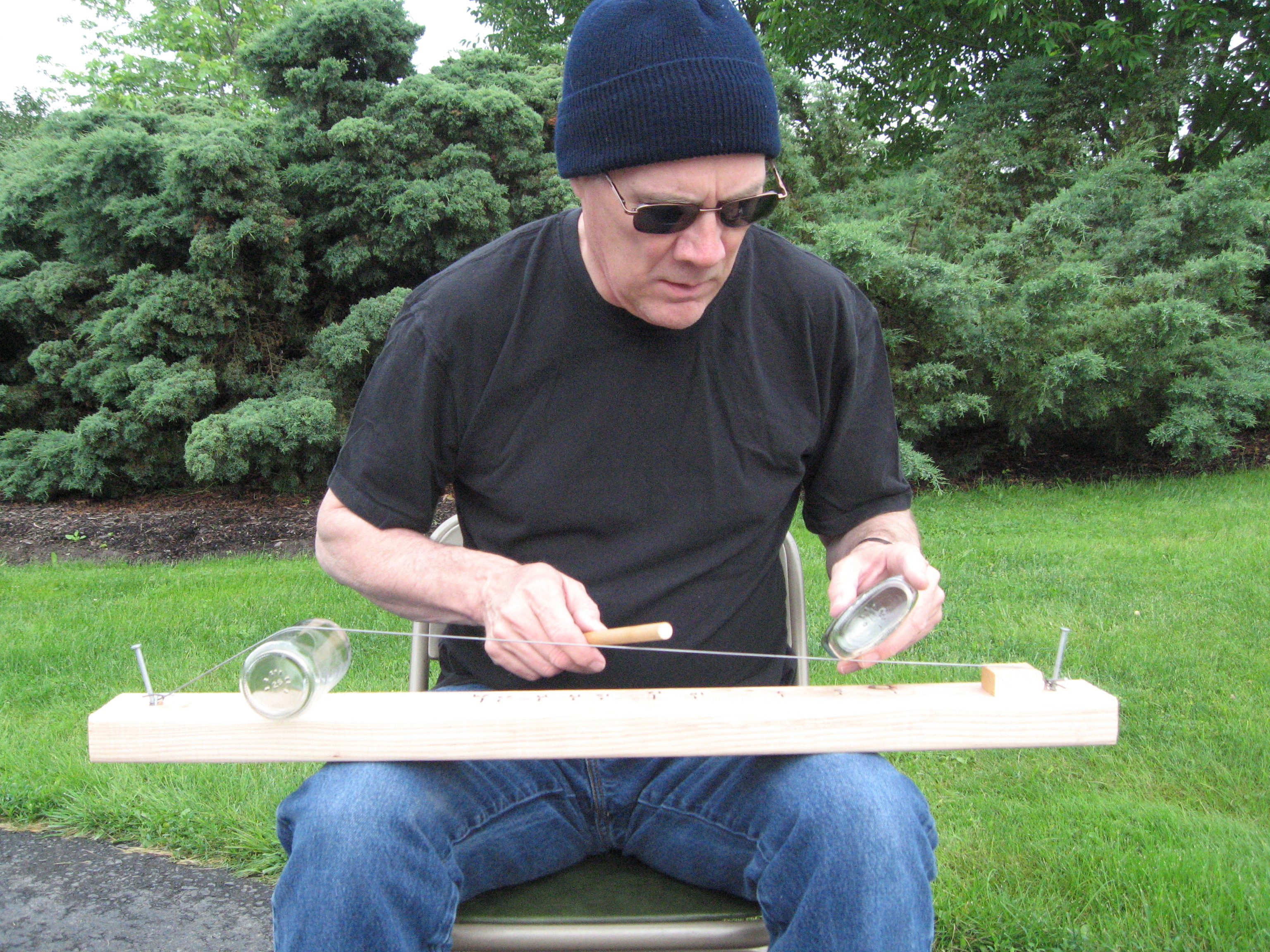Build the elemental slide guitar, from just a board, a wire, and a jar. Maybe you saw Jack White playing one in It Might Get Loud; now make your own for pennies.
About the Diddley Bow
After reading Alan Lomax’s excellent book The Land Where the Blues Began, I developed an interest in the diddley bow, a primitive one-string guitar rarely heard outside the rural South. Shane Speal, founder of the current cigar box guitar movement, suggested that I get the CD One String Blues, which featured nine cuts by diddley bow master Eddie “One String” Jones. The performances were stunning — raw, percussive, and deeply compelling.
After just one listen, I knew I needed to build and learn to play this instrument. On the first track of the CD, Jones described how he had built his diddley bow; a drawing of his instrument and two photos were included in the CD insert. With this information, I built my first traditional diddley bow.
In the South, the diddley bow is considered an informal practice instrument, built from found or recycled materials. Here’s how to build a stable, good-sounding instrument in about 10 minutes.
Traditionally, the string is struck in a rhythmic manner with a finger or a stick or some other implement, and the pitch of the string is altered by using a slide made of glass, metal, or some other hard substance. The diddley bow is slide guitar stripped down to its most elemental level.
WARNING: If you build a diddley bow, be aware that the wire is of unknown tensile strength and is being brought to unknown tension; in addition, the board and the glass jar bridge are both under compression. Use face and hand protection when tensioning up the diddley bow. Please use good sense when building, tuning, and playing these instruments.


